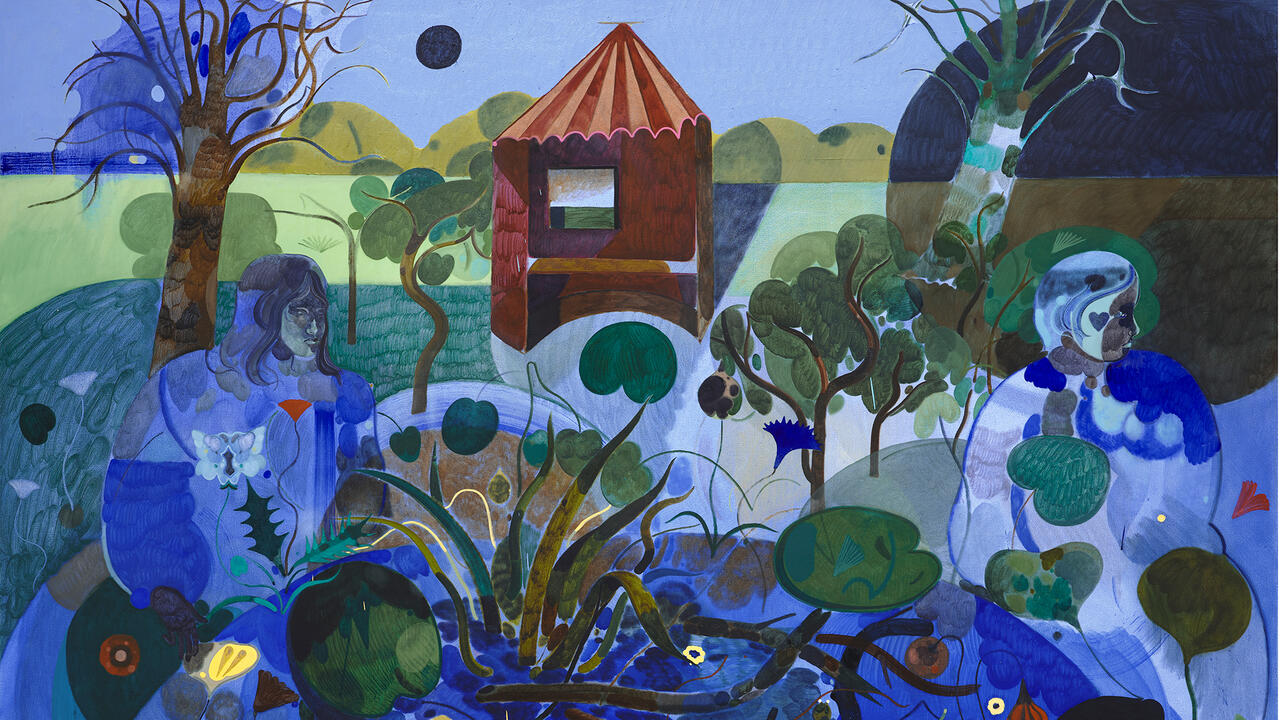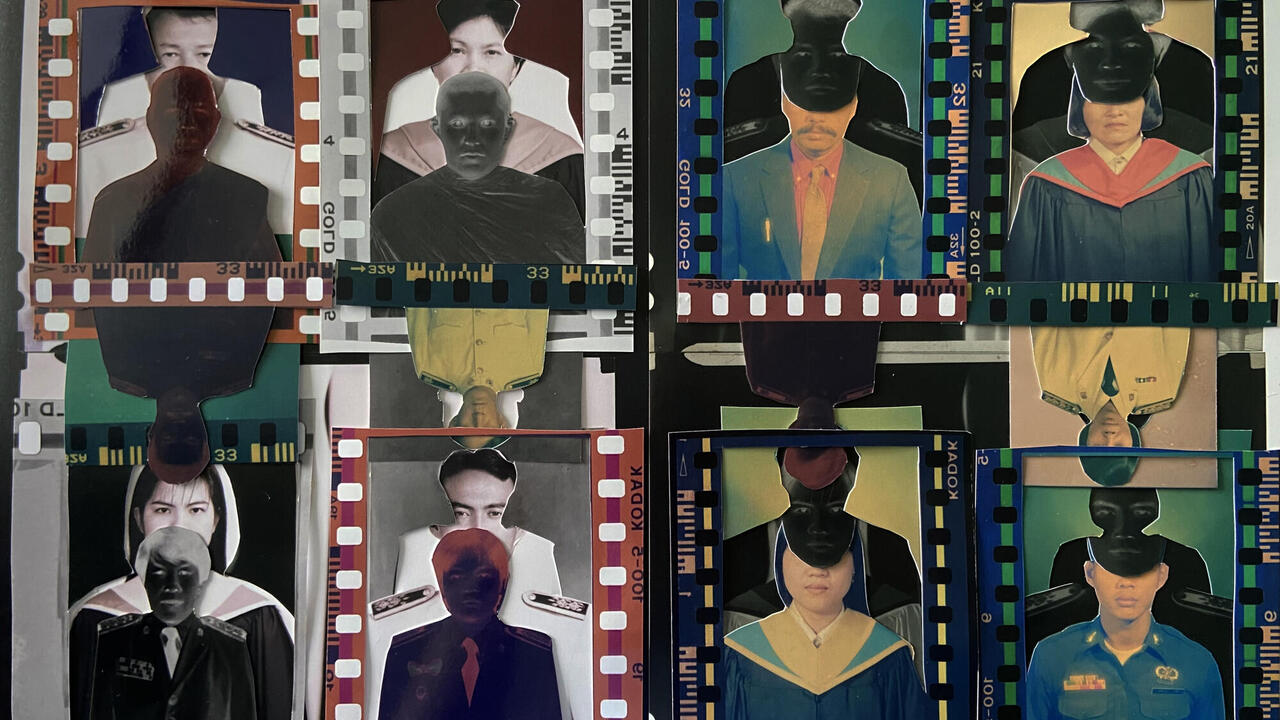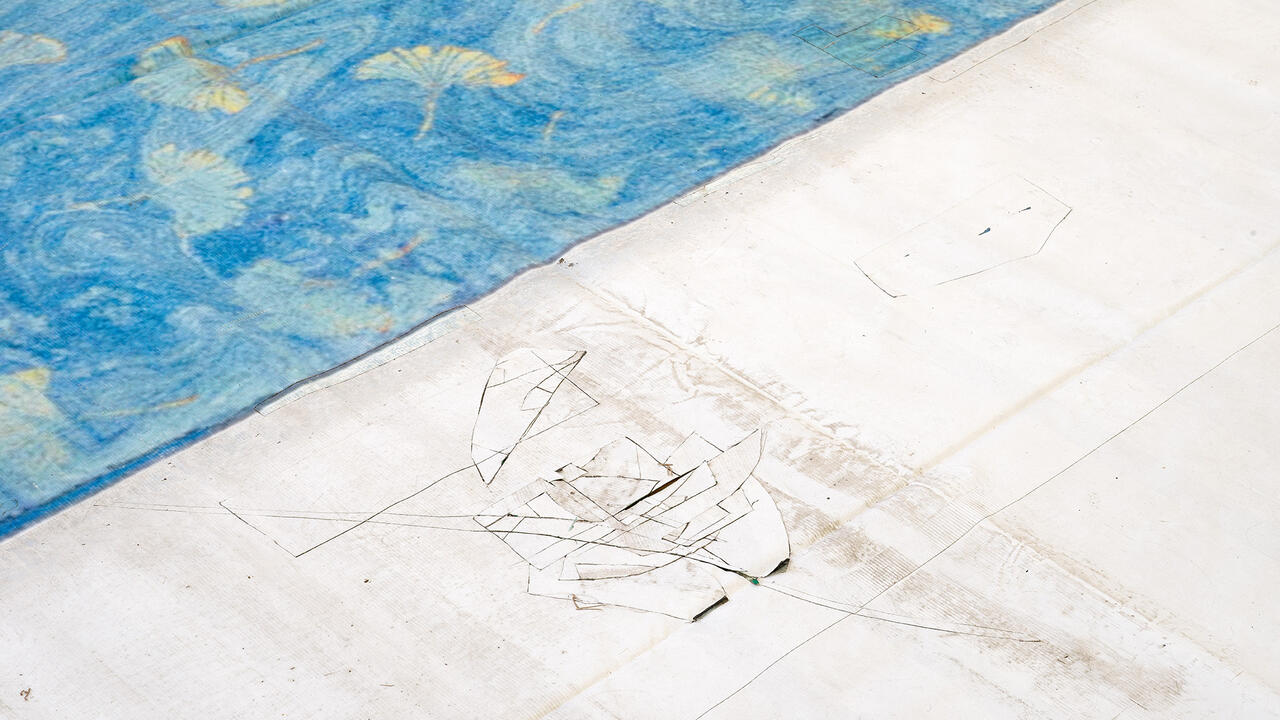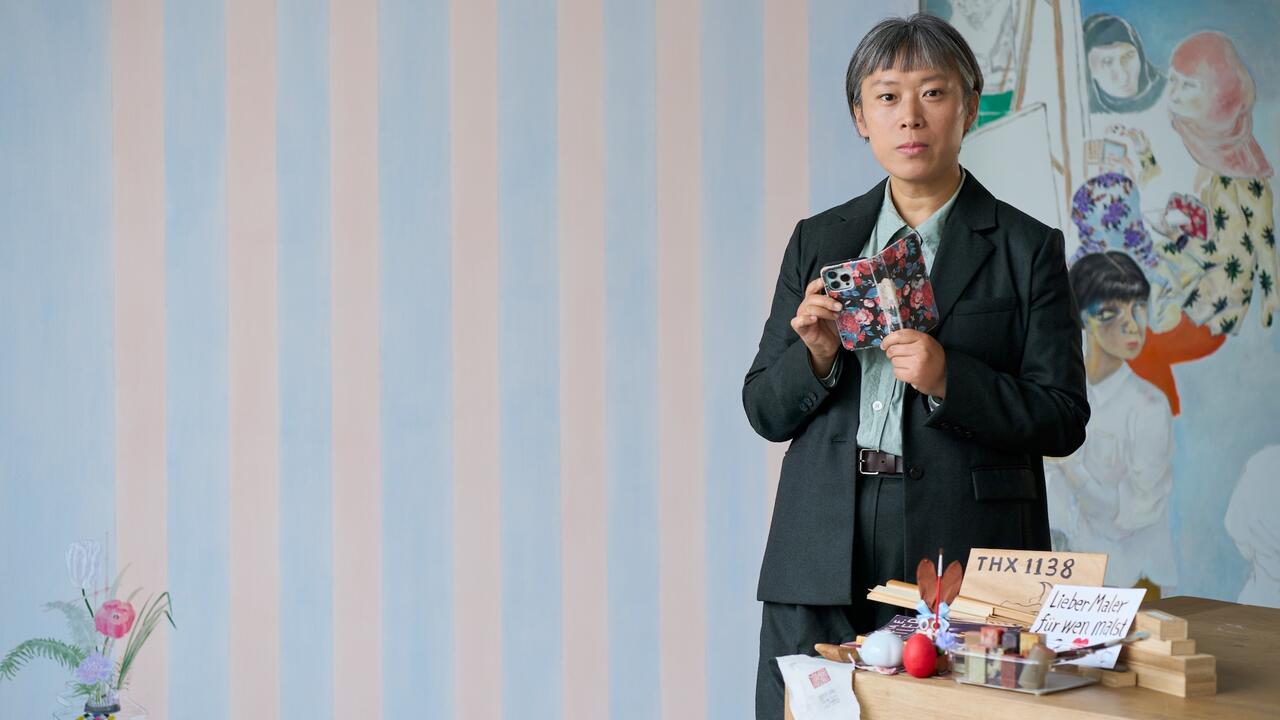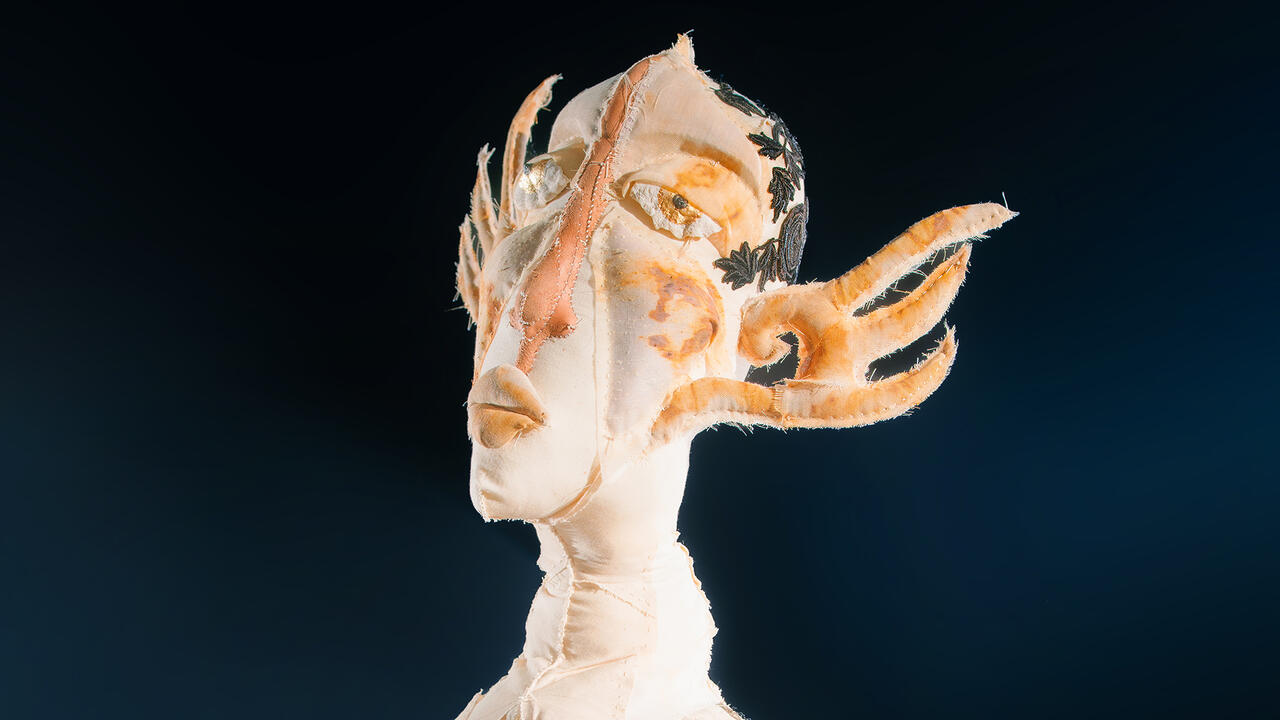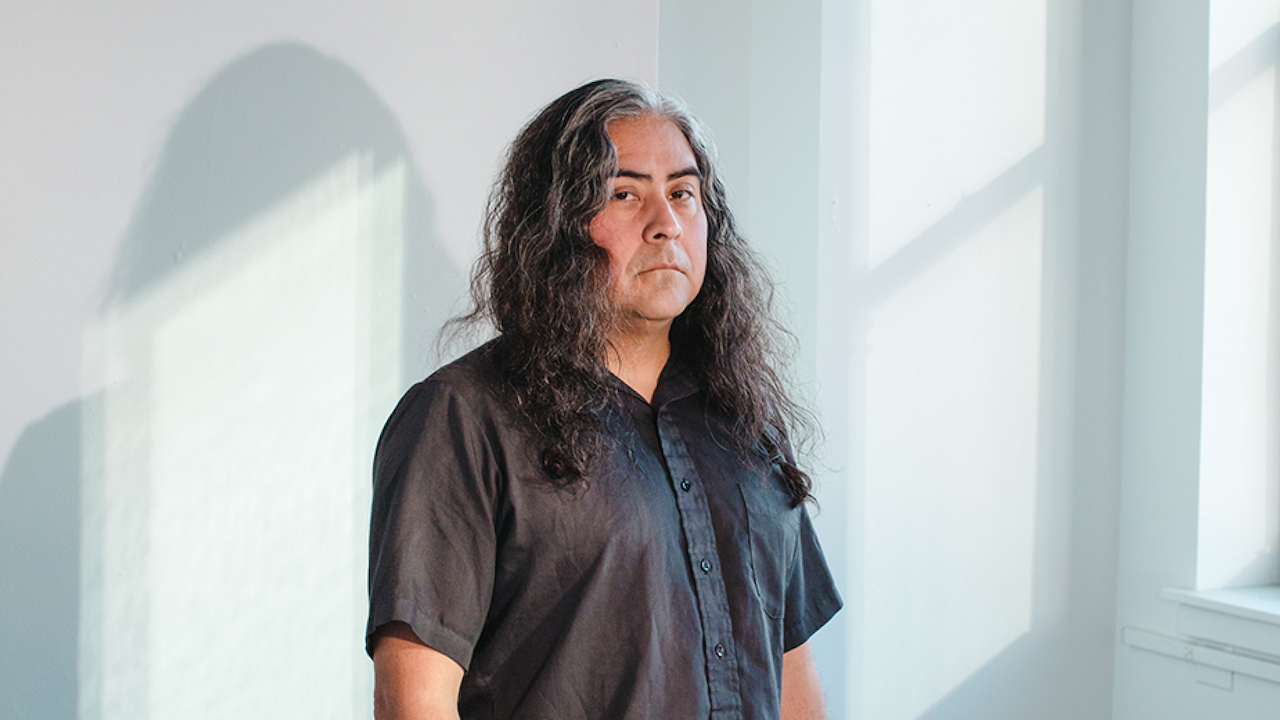We Must Not Be Isolated
Award-winning novelist Ali Smith responds to Sonia Delaunay's joyful and 'simultaneous' approach to life, art and design
Award-winning novelist Ali Smith responds to Sonia Delaunay's joyful and 'simultaneous' approach to life, art and design

Her 1916 self-portrait? It’s a smiling refutation of the figurative. Or, rather, a refutation of just being figurative. It’s a work that’s a portrait of herself and a portrait of the interplay between the figurative and the abstract, as if that’s what the self is anyway, colour slabs, curves and shapes, and a smile beneath an eye that’s at once a wink and wide open, a head that radiates colour either as a gorgeous multi-resonant hat, or as if thinking and the artistic act of representation are both visible, reverberating, physical energies. All of the above, simultaneously.
Her talent? Simultaneous is a good word for it (the favoured Delaunay word for what both Sonia and her husband Robert did, simultané) — a state of being or a happening or a union of several things at the same time. Plus, she removed (or made invisible, or revealed as an unreality) the dividing lines not just between the colours that make a painting but between art forms and all forms: art and fashion, design, business, art and life itself; instead, she revealed and emphasized the natural and aesthetic interconnections between them. Her transformations changed and united the worlds of design, décor, fashion, always gesturing to, changing and uniting all the divided things throughout the world itself. There was nothing her colour-vision excluded, from poetry, books and book bindings to lampshades, cushions, accessories; from clothes and fabrics to furniture, shops, casinos, opera, ballet, theatre, cinema — at one point, even the transformation of a Jesuit chapel was on the cards. And then there were the cards themselves (the playing cards, I mean), and the alphabet, and a couple of iconic automobiles — and, over and above this, the renewing transformation that all of this wrought in the people who wore the clothes, who used the fabrics, who saw the colours.

Somewhere in all of this, and equally part of her discipline, is the implication of a questioning of any false line dividing the union and simultaneity of the inner and the outer self. In her written self-portrait, the short memoir published in 1978, Nous irons jusqu’au soleil (We Will Go Right Up to the Sun), she remembers (in a vibrant present tense) the time of making her first collages, discovering her urge to paint and cover things with colour — a box, cushions, waistcoats, coats and dresses — and how these first ‘simultaneous objects’ worked to ‘astonish our Sunday visitors […] it’s just that I see colour contrasts everywhere in life [...] I do it all for the fun of it […] Colour excites me. It’s not that I’m thinking about what I’m doing. These things come from inside, gut-level.’ Then she adds — both prophetically and because it’s already known, because she’s in her 90s when she writes this book, and because something about that word simultané means that past, future and present tenses are all held together too — ‘It’s going to be the same all my life.’ 1
Half a century before (or 15 years later, or all at once), in 1926, she’s giving a lecture at the Sorbonne where she marks out the path of a brand new and, as yet, unrecognized canon, one that leads through the great modern French experimental painters of the past decades directly to fabric design and haute couture via a new and vitally collaborative relationship between the arts and design. Back in 1904, when she’s still Sonia Terk, in her late teens, she’s holding forth passionately in her diary: ‘We must not be isolated. Peoples should aim to unite, to amalgamate, they should not isolate themselves.’2 Partly, she’s writing this in response to her own Jewishness and her teenage reading about, and close knowledge of, the sufferings of the Jewish people in Ukraine and Russia, where she’s grown up. (Born into poverty as Sara Stern in Odessa in 1885, she spent the years after her early childhood in St Petersburg with an aunt and uncle who adopted her into a lifestyle much more luxurious than that of her parents.) By the time she gets to Paris in her early 20s, she is highly educated, incredibly well-read, free-thinking, fluent in several languages, well-travelled in the world and already on the way — highly unconventional though it is for any young woman at the time — to being a painter. Partly, this ethos of connectivity, of amalgamation, is the truest self-portrait of Delaunay there is. Love of the ever-connectivity of all things, especially in the contrasts between things, runs through her life, her work and her writing.
It was the heart of her marriage. ‘I was born the same year as Robert Delaunay, under the same sun, some three thousand versts away,’ she wrote in Nous irons jusqu’au soleil.3 Simultaneous distance and co-existence. ‘Our lives became tied together. The passion of painting was our principle bond.’4 Photographs of the couple spill over with a multitude of friends, a mix of poets, artists, dancers and choreographers with whom they didn’t just co-exist, they made collaborative works. Her multiglot talents meant that she was, for this group, everything from a natural bridger of national differences and languages to an aesthetic conduit (for instance, her translating of Wassily Kandinsky’s pre-war prose and articles); borderlessness was her natural state and Delaunay’s sociability and hospitality were legendary. So, too, was the great energy and happiness that came simply from being anywhere near the simultaneity of art and environment the Delaunays called home. As one lightstruck, lovestruck young surrealist writer, René Crevel, put it: ‘After five minutes in Sonia Delaunay’s house, who has not been surprised to find in himself more conviction, more hope, even happiness?’5
Naturally, just as the cut and look of her clothes always enhanced the individuality of the wearer, this working together with others always miraculously revealed or enhanced her aesthetic individuality. She was fierce and bristling in her protection of the equality, the connection and the simultaneous separateness of her relationship with Robert. A 1970s interview in Art Talk by the American art historian Cindy Nemser is revealing. Nemser asks Sonia about their togetherness in the invention of Orphism and colour simultaneity. Nemser suggests that, according to what she’s gathered from other commentators, in their collaboration, Sonia was the true force. Delaunay takes against Nemser’s line of questioning. ‘You are speaking like somebody who writes about artists,’ she says at one point and then laughs, and you can tell how sharp she could be with people, how unsettling and tough, what an unsufferer of fools. She rises up like a high-hackled cat: ‘We were two moving forces. One made one thing and one made the other […] I made my paintings alone.’
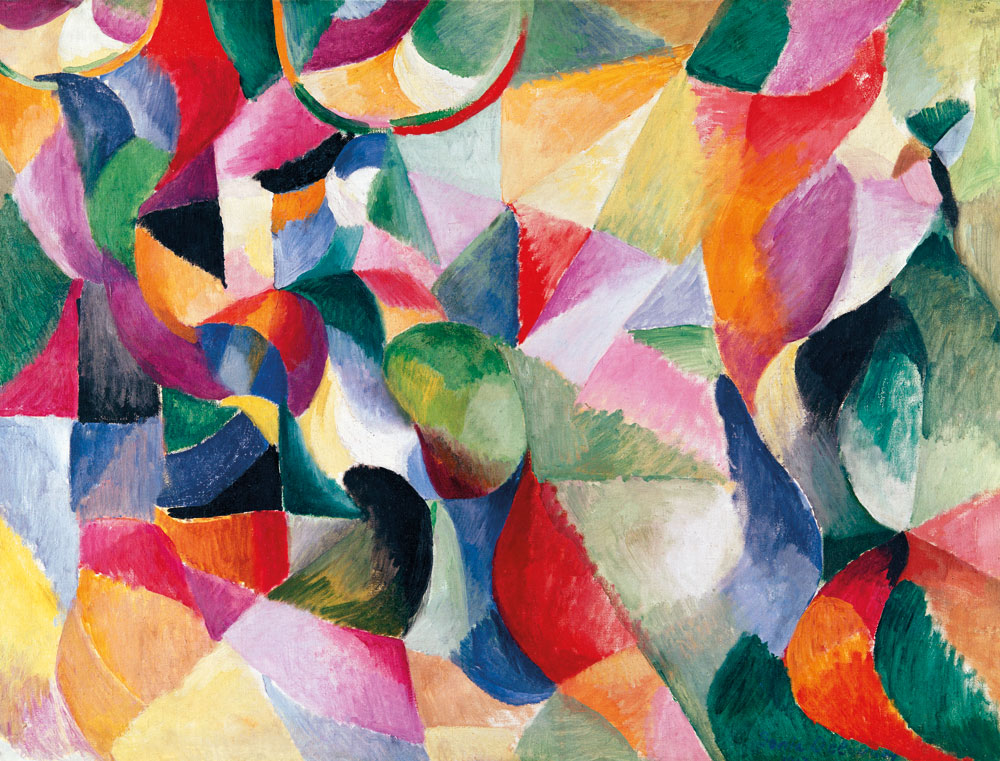
In the individual act of the work, her desire was always to reveal a reality of non-division, a natural and unified assemblage. ‘I want to create a finished painting,’ she said towards the end of her life, ‘a painting that is not fragmented […] it won’t be possible to see where [the colours] pass from one to another.’6
In her very earliest paintings, influences from Paul Gauguin, Vincent van Gogh and the fauves lightly mask her strongest instinct: an argument between colour and line that’s so insistent it’s almost vocal. The many mask-like faces, the figures in physical separation from their backgrounds, as if superimposed on their environments and disagreeing with its and their own saturation, display a kind of stunned intoxication at their depth of colour and its remarkable depth all round them.
Her painting Nu Jaune (Yellow Nude, 1908) is a vision of a woman made, changed and trapped by line while the power of colour goes on all around her, even through her. Her body seems dipped, tempered at the line by colour itself and by a different possibility, when it comes to line, than the black outline that contains her: it’s as if she’s trailing her hand in the impact made by this argument of colour and line and something about this existence is a drag — no, worse, it’s a louche prison, a prostitution. This is a picture where a black line represents a closing of the eyes. Meanwhile, all round her, the fabric of things offers something different, even possibly luxurious; the only untrammelled richness or ease in the picture comes in the shape of the cushion, free of outline, inside which the use of colour itself is free of outline; it’s so free that some of that colour is leaching up out of the object and has even reached, on its own terms, the nude’s hair and her head.
The real breakthrough came when forms themselves — things unused to being understood simultaneously — came together for Delaunay. In 1911, she made a cradle cover for her and Robert’s baby, Charles. ‘When it was finished, the arrangement of the pieces of material seemed to me to evoke cubist conceptions and we then tried to apply the same process to other objects and paintings.’7 It’s a shape made of shapes. It’s a work of (and for) practical comfort, brought together from fragments and scraps. Its reds are still vibrant a hundred years later and the surprise of it is that its remnant state is itself a sort of textural unexpected pleasure, as if she’s tapped an untapped joy — that a single thing made of so many disparate things is in itself a joy, with its so many irregular pieces, shapes, colours and textures patiently stitched into a larger irregularity. It is an act of love.
In Le Bal Bullier, colours are seen as an elemental blur in a dance so vital and swirling that shape has become nothing but colour.
For Delaunay, the effect of such a window on the world was a resonant aesthetic liberation. ‘Little by little, the apartment was transformed: the walls were painted white and the lampshades and cushions dressed in a mosaic of paper and fabric. I rebound books that I loved […] in the manner of an assemblage […] the assemblage of bits of fabric gave birth to a unique style, according to which I executed a portrait of Nijinsky dancing.’8
The dancer was up and kicking: it was only two years till Delaunay would paint the first and most dancey of her masterpieces of simultaneity. Le Bal Bullier (1913) is a painting in which the play between abstract and figurative is just that: sheer playfulness. It demonstrates a back-and-forth embrace, so that the whole painting, the whole long room, seems to be dancing in a revelation of love and connection. (It reminds me of a scene in a Max Linder silent film — the title has escaped me — in which a couple are so in love that when they start dancing to piano music, soon the pictures, the table, the furniture and even the piano itself can’t help but dance too.) More: this painting has a new and spatial sense of narrative, a sequential shift that simultaneously denies a fixed sequence. Eye-wise, we’re pulled along it in both directions, and this makes us part of its dance of shifting perspectives. It’s painted on mattress ticking, so the dance/painting is also in some ways a bed, a love act of figurative/abstract symbiosis, in which everything is movement, everything an inner and outer dancing.
‘Abstract and sensual have to marry, for me,’ Delaunay wrote in Nous irons jusqu’au soleil. Her second version of Le Bal Bullier is a much more abstracted affair, colours seen as an elemental blur in a dance so vital and swirling that shape has become nothing but colour. Both paintings were named for the dance hall at which she, Robert and their friends would strut their stuff (two francs entry on Thursday nights and half price on Saturdays), usually dressed in Sonia’s early simultaneous clothes, bright swirls of patched colour-amalgam, which gave them the visible status of glorious jesters, surreal panacheful dandies.
Guillaume Apollinaire’s description of these clothes — their fusion of ‘woollen cloth, taffeta, tulle, flannelette, watered silk and peau de soie’, the ‘purple dress, wide purple-and green belt and, under the jacket, a corsage divided into brightly coloured zones, delicate or faded, where the following colours are mixed: antique rose, yellow-orange, Nattier blue, scarlet, etc.’9 — sounds remarkably like what the American poet Wallace Stevens longed for in his ‘Disillusionment of Ten O’Clock’ (1915). It’s a poem disappointed by dull houses ‘haunted by white nightgowns,’ none ‘green, / Or purple with green rings, / Or green with yellow rings, / Or yellow with blue rings’, a sure sign that the imagination has lost its mojo, that nothing is properly intoxicating, that the necessary strangeness that makes life vibrant has left life.

Delaunay herself was a lover and understander of poets, drawn to them especially when it came to the possibilities of fruitful collaboration. ‘Poetry of words / poetry of colours’ she wrote, ‘poetry moves / through all / the creations of art’.’10 ‘A poet’ was one of her favourite things to call her husband, who worked with colours rather than words and, over the years, she made work to accompany writings by Stéphane Mallarmé and Arthur Rimbaud. Apollinaire, who liked a bit of indivision between the graphic and the poetic himself, was one of the Delaunays’ earliest friends and one of Robert’s most important explainers and critical supporters. Above all, Sonia was taken with the work of the Swiss-born novelist and poet Blaise Cendrars, and their collaboration produced, in La prose du Transsibérien et de la Petite Jehanne de France (Prose of the Trans-Siberian and of Little Jehanne of France, 1913), the first-ever artist’s book, an extraordinary unfolding creation that is longer than a human being. Her part of it all was ‘an improvisation, an impression’ of Cendrars’s long text about a journey (real? imaginary?) taken with his young prostitute lover from Moscow to Harbin in Mongolia.
It is a simultaneous fall and rise of colour and shape. Colours bleed across the images, so they’re never really divided from the text. A blue skyscape, greenery and shafts of sun seem to break over and flash through the coloured blocks of text as they would through the moving windows of a train. The eye has to travel the poem; in fact, the eye animates the work in all directions. At its end, down at the foot (or is it its start? because the work, like Le Bal Bullier, is a spatial narrative, at once centrifugal and centripetal) is one of Delaunay’s renderings of the Eiffel Tower, round which she always slings a ring, as if she’s won the tower in a game of hoop-la or, in a making of a sensual male-female fusion of symbols, as if the Eiffel tower is always reaching up to pair with the sun.
The tower was a favourite symbol Sonia shared with Robert; he was excited by the idea that the number of copies of La prose du Transsibérien et de la Petite Jehanne de France they planned to publish would, unfolded and placed end to end, be as tall as the actual tower. For Sonia, the tower turns up again and again: early on, she spelled her name on her letterhead as ‘DelAunay’. She is good, too, at suggesting the endless surprise of an ‘o’ or an ‘o’, as an eye, a target, a breast or, simply, a resonant, concentric shape; I see her circling Os as a complete modernist makeover of the renaissance halo. Later in her work and life, her use of the ‘s’ shape promises the continuance of a road or path. The cover of her colourful book Alphabet (1972) suggests that the letters themselves are emanations both of colour and of each other: the a b c d e and f rise out of each other like family, in a sharing and displaying of colours that happen to take on such meaningful shapes.
Everything is more than itself — as in Prisme électriques (Electric Prisms), her large painting from 1913, which revisits the power of La prose du Transsibérien et de la Petite Jehanne de France. A reference to it, relatively very small, can be seen to the left of two huge multi-coloured discs, forms from which energy radiates in a revelation of curving interconnectivity; it is as if the painting is asking whether the book, which was made a year earlier, is only an incidental part of such a huge reverberation or is the source of such vivid power, such rhythmic emanation. Or both.
There is immense freedom in Delaunay's new language of colour. 'Beauty refuses the constraint of meaning or description.'
Cendrars wrote about Delaunay’s dresses as if they made women into works of art: ‘on the hip / the poet’s signature’. In turn, Delaunay covered things and people with words as well as colours, designing dress-poems or poem-dresses, including one for her friend the surrealist Tristan Tzara. She wrote that her costumes — for instance, at the Hotel Claridge ball in 1924 — ‘surprised people. Ball gowns? Theatrical disguises? Paradoxes in painted silk […] I wanted, along with having fun, to show the many riches of women’s lines and body movements. […] It pleased me […] to watch a whole new creature appear.’11 Cendrars thought her colours, as well as being a kind of poetry, sang. It’s always struck me as utterly natural that Charles, the Delaunays’ son, grew up to be a great jazz critic and the friend and biographer of Django Reinhardt and his Quintette du Hot Club de France; they made music that sounds as if it were born, fully formed, from one of Sonia’s images. Listen to Reinhardt’s ‘Improvisation no. 2’ (1938), a work of spatial gestures and linear curves, and you can glimpse what one of her paintings might imaginatively sound like.
Delaunay went to many concerts with her aficionado son and thought Louis Armstrong’s music was ‘absolutely abstract’. She titled one of her hundreds of fabric designs ‘Jazz’; she shares with the music an endless rhythmic inventiveness, which celebrates the connections between opposites — waves and fractals, angles and curves, fabric and life, nature and artifice. It’s a celebration, too, of the energy of a repeating pattern that is, paradoxically, never subsumed by sameness.
Her fabric designs, along with her clothing and interior design work, kept the wolf from the door, regardless of the vicissitudes of history. (She avoided financial ruin despite the Russian Revolution, the Wall Street Crash and two world wars.) But the fact that design was an integral part of her art and her life is obvious from a photograph of her taken in 1923: she’s at her desk painting a pattern that seems to have leapt off the paper, onto her clothes and into the skein of fabric next to her. ‘Contemporary fashion,’ she said in the early 1930s, ‘ought to start from two principles: vital, unconscious, visual sensuality on the one hand, and the craft of fabrication on the other […] as if everything begins anew every day.’12
This newness she repeatedly defines as a liberated language — a whole new kind of poetry, and a uniter of the arts. ‘The theatre of colour must be composed like a verse of Mallarmé, like a page of Joyce: perfect and pure juxtaposition, exact sequences, each element apportioned its correct weight with absolute rigour,’ she wrote. But there is immense freedom from any fixed or received meaning in this new language of colour. ‘Beauty refuses the constraint of meaning or description.’13 In it, too, there’s a steadiness which suggests that every system or machine, even those apocalyptic ones roaring in the 1930s towards Nazism and the foul rot of World War II, can be seen as she sees the aeroplanes she painted for the French Palais de l’Air — for the 1937 Paris Exposition dedicated to Art and Technology in Modern Life — as just colour, colour and more colour. Somehow, this is heartening, liberating, rather than naïve. The darker palette in her painting after Robert’s death in 1941 of cancer, and in the work she made during the war in the occupied south of France — living from month to month between fears and losses, and with a stack of artillery shells under her hotel window — reveals the colours themselves as all the brighter.

They’ve stayed fresh. Simultaneity doesn’t just conjure a constant present or confirm a continual, always colourful state against all the odds — it also gestures toward cancelling the timeline altogether. More than 60 years after Delaunay made her son a cradle cover, the French singer/songwriter Françoise Hardy, the epitome of the new and the young, was photographed wearing a dress based on a Delaunay design. Half a century further down the line, I’m standing in front of Electric Prisms at Tate Modern, marvelling at how a picture can lead a thinking human being to breathe more fully, and a child runs past me in delight, speeding from room to room in trainers that are flashing with irregular, multi-coloured electric lights.
‘It is more simple than people make it,’ the ageing Delaunay told that annoying interviewer in the 1970s, who had just pronounced her work ‘a kind of force, a universal force, a kind of energy of light and colour’. Delaunay shook off the implications. ‘Children like me. It is a big compliment.’
Be pinned down and defined? Outlined? Fixed? Told we’re one thing rather than another? The fabric of things, and of us, is much richer via the wide-open, simultaneously winking eye of Sonia Delaunay.
Main image: Sonia Delauney, Nu Jaune (Yellow Nude), 1908, oil on canvas, 65 × 98 cm. Courtesy: Musée des Beaux-Arts de Nantes;© Pracusa
- Nous irons jusqu’au soleil, trans. Ali Smith, Editions Robert Laffont, Paris, 1978
- Sonia Delaunay, Tate Gallery Publishing, London, 2014, p.20
- Op Cit. Nous irons …, p.3
- The New Art of Color: The Writings of Robert and Sonia Delaunay, Viking Press, New York, 1978, p.195
- Ibid, p.169
- Op. Cit., Sonia Delaunay, p.275
- Op. Cit, The New Art of Color, p.210
- Ibid, pp.210–11
- Ibid, p.180
- Ibid, p.213
- Op Cit., Nous irons …, p.93
- Op. Cit., The New Art of Color, p.208
- Ibid, p.212









